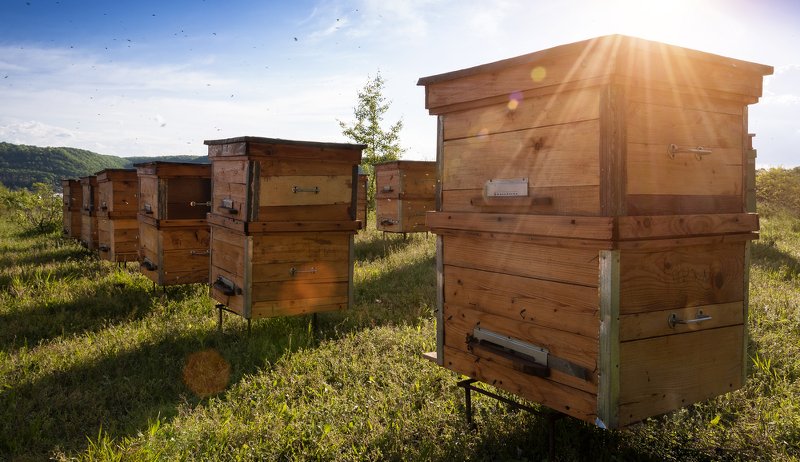
Summer is the beacon of the beekeeping year, calling to us from every other season, with hopes of nectar flow and surplus honey, overwintered queens and healthy brood. Everything we do in other parts of the year is to support the work the bees do in summer. When it comes to beehive ventilation, the winter rules are clear: Give your hives adequate ventilation to rid the interior of condensation because wet, cold bees are dead bees, and no one wants that.
The rules of summer beehive ventilation are a little fuzzier, and they get fuzzier still depending on where you live. When we project our own human level of comfort onto our little bee charges, we walk a fine line of acting out of compassion or acting out of knowledge and awareness. When you see your bees bearding at the front of the hive in early-August, when temperatures are in the 80s or 90s Fahrenheit, what do you think? Are you worried for them? Think it’s too hot? That they are uncomfortable or, worse, dying?
You might take action to cool the hive down, out of concern for their well being. Or, you might consider that brood is reared between 89.6 and 92.6 degrees Fahrenheit, and that balmy summer day means nurse and house bees don’t have to work as hard to keep the temperatures warm enough for rearing brood. Their goal, then, is perhaps to reduce the temperature little by little, and this might mean a few thousand of their sisters sleep outside, or take their rest on the hive’s front entrance.
Consider, too, that condensation plays a large role in the success of a summer hive and might suffer from excessive beehive ventilation. Typically, forager bees are taking daily flights, to find nectar of course, but also to forage for water. Water is critical in the hive (just as it is for us), and condensation might offer a virtually effortless source of that precious resource. The well-meaning beekeeper might see condensation and think the hive is drowning in its own heat—but unless you see other alarming signals, it’s best to trust the bees on this one.
Knowing these important points helps us create a quick list of things to do—and not to do—regarding summer beehive ventilation.
1. Inspect Hives Mindfully
Conduct inspections as usual, but know how your actions affect the bees. We beekeepers have chosen to put these bees into the hives constructed for them, so it is our responsibility to monitor them and provide care as needed. That said, keep in mind that each inspection sets the hive’s production back. It takes roughly a week for the bees to ameliorate the “damage” we do with a simple inspection. So inspect only when you have a purpose in mind.
2. Reduce The Entrance
Bees like small entrances. It is traditional practice to remove the front entrance reducer during a honey flow (to allow bees leaving and returning from foraging flights to come and go more efficiently), but it also makes the hive’s temperature harder to regulate, and the hive harder to defend.
3. Don’t Try To Cool The Hive
New research suggests that varroa mites don’t care for the heat and humidity of a honeybee hive. They also don’t like the wetness from the condensation. It’s possible the bees understand this on some level, and we might do well to trust their judgment.
4. Leave Cross-Comb In Place
Cross-comb is the curvy comb built between frames, connecting them perpendicularly. A newer beekeeper might crack open a hive and see this pattern and think, “This doesn’t look tidy!” (and proceed to clean it up) or “What were they thinking?” or “Why are they making this harder on me?” In fact, the cross-comb is a support structure, strengthening the existing comb in the hot, wet conditions of the summer hive.
I often advise beekeepers to trust their instincts when faced with challenges in the hive. But it’s worth rethinking that sentiment, especially for beginning beekeepers, considering there’s a lot to understand about the honeybee’s behavior and habit to back up that human instinct. As in every area of beekeeping, do your best to understand the mind and behavior of the honeybee before making the decision to interfere—after all, bees’ instincts about what they need are far superior to ours.




